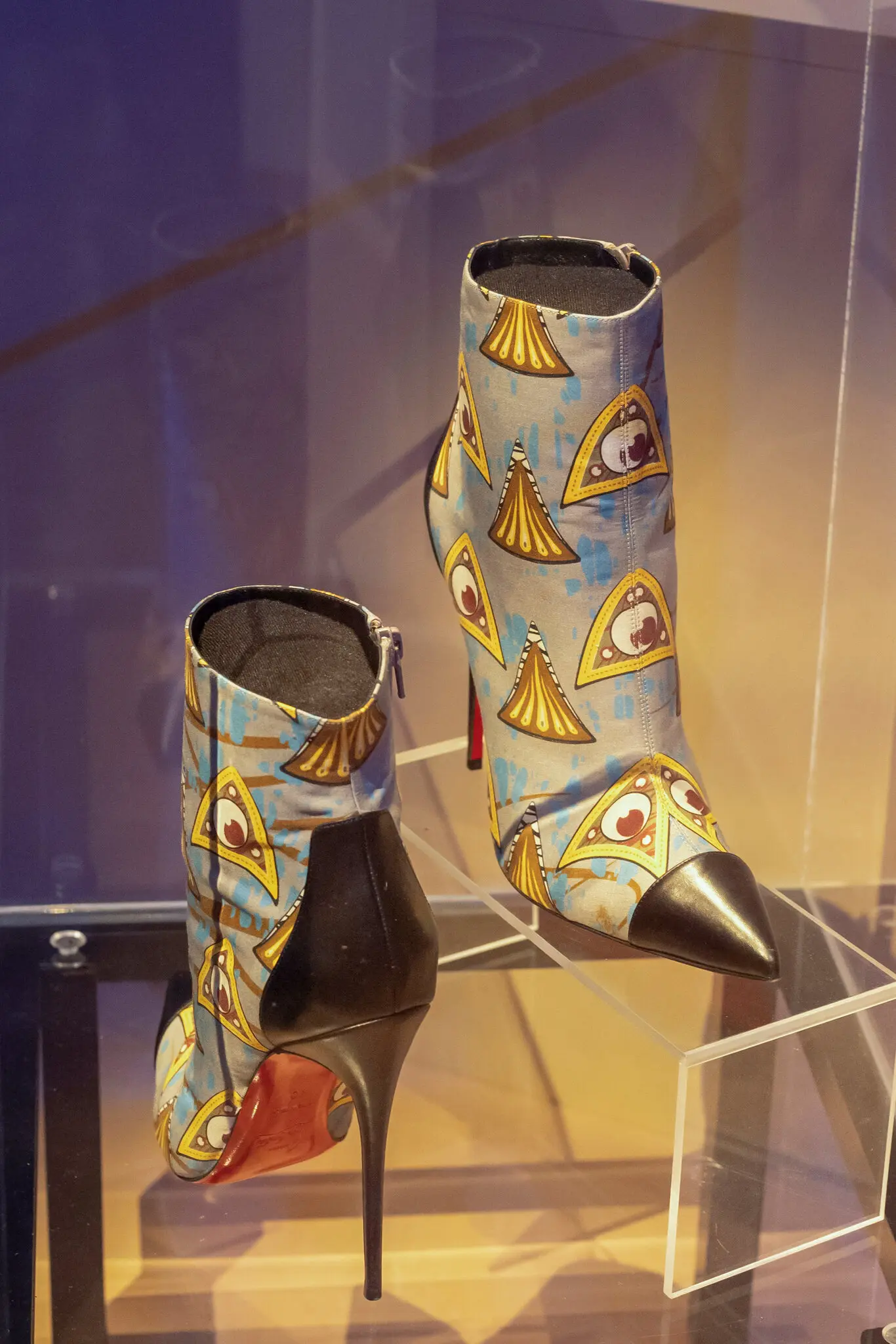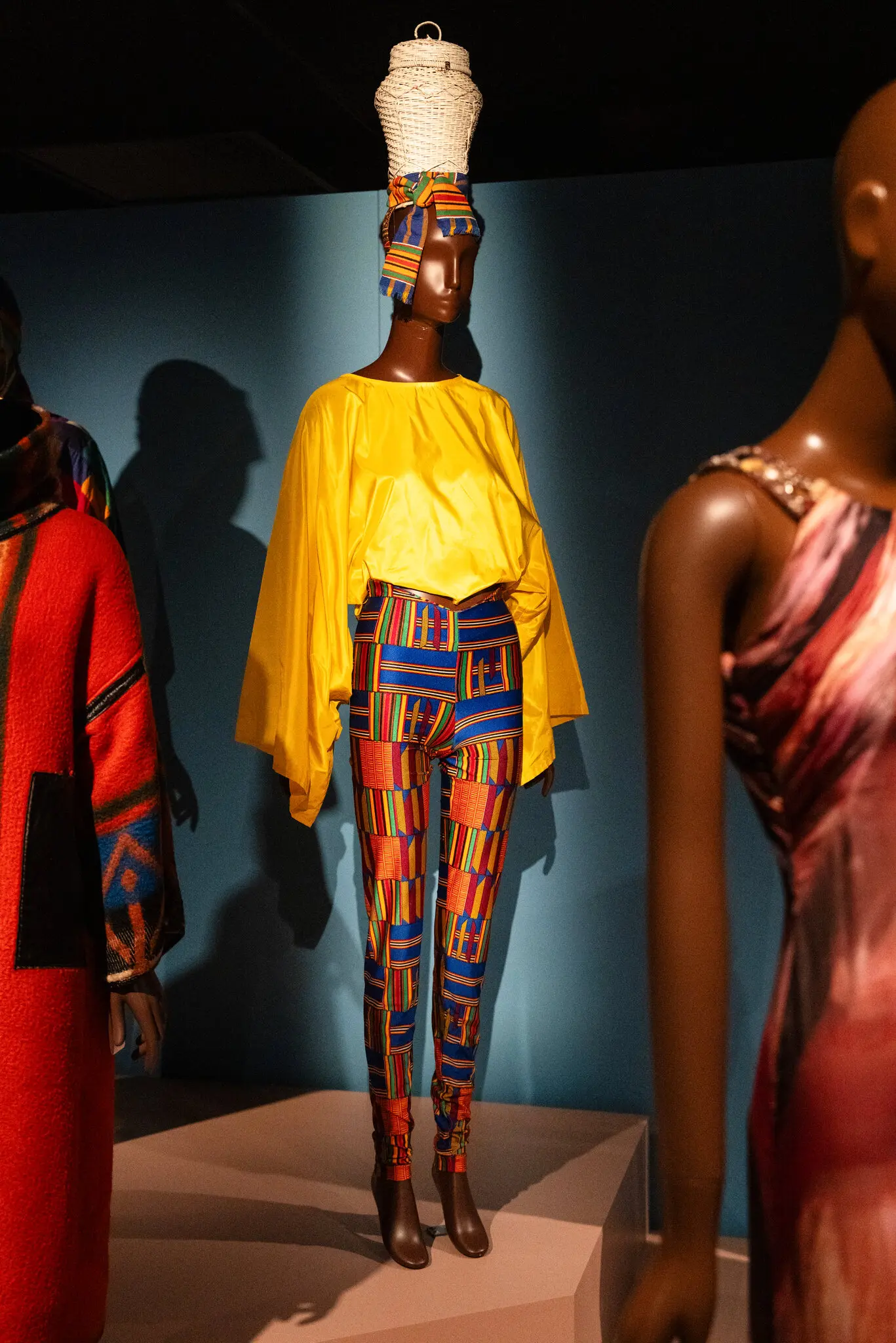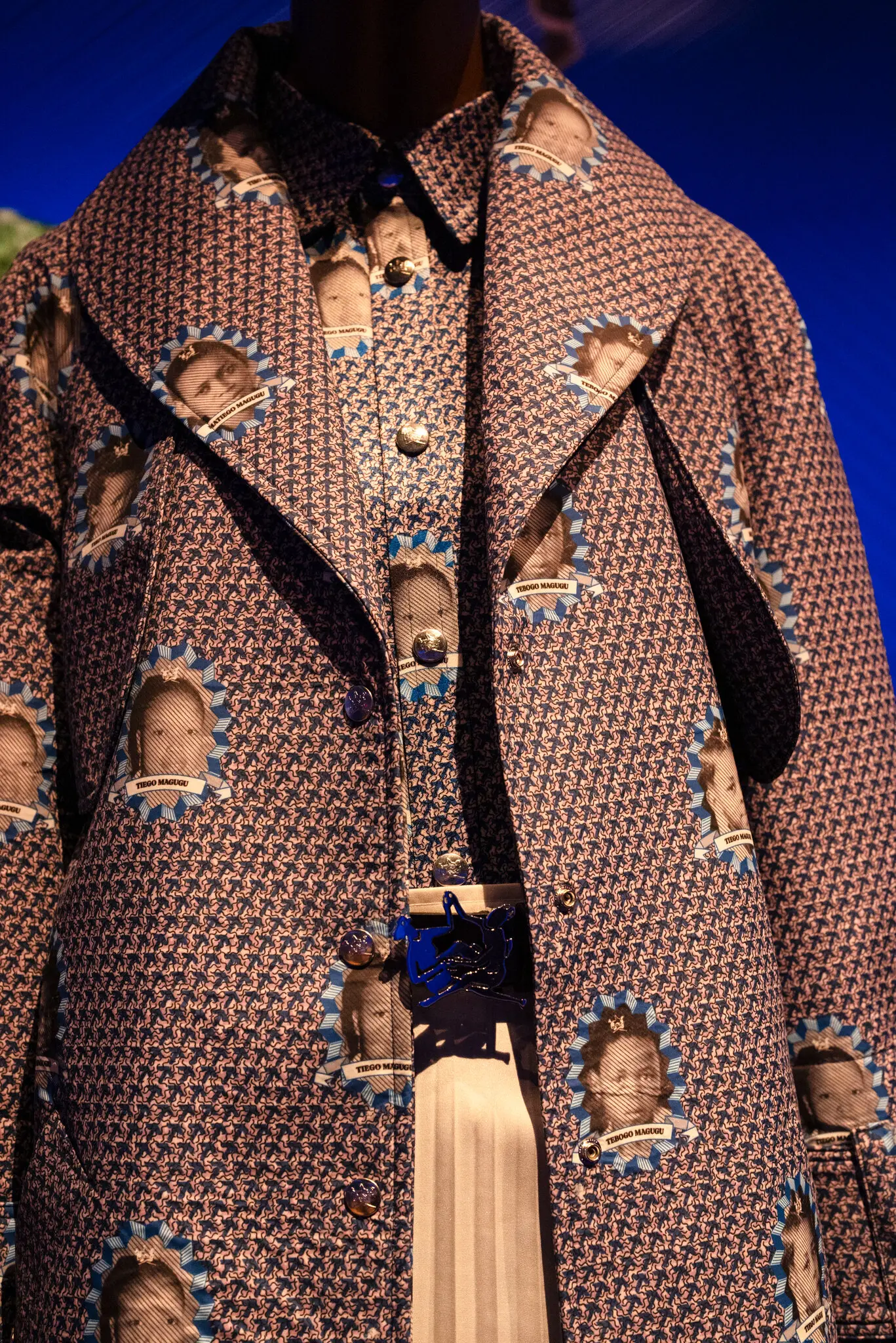By examining the work of designers of African descent, a new exhibition in Manhattan finds common threads and, more interestingly, divergences.

A gallery in the Museum at FIT exhibition “Africa’s Fashion Diaspora.”Credit...James Estrin/The New York Times

By Sandra E. Garcia
In a darkened gallery, a dress designed by Madame Willi Posey bedecks a mannequin standing under a spotlight. Notably, Ms. Posey, who worked as a fashion designer in Harlem in the 1950s, ’60s and ’70s, is the person who taught Faith Ringgold, a venerated multimedia artist whose story quilts have hung in many of the great American museums, how to sew. She was her mother.
The Posey ensemble, which includes wide-leg pants and a long-sleeved tunic in a gold fabric that combines zebra and leopard print, is part of “Africa’s Fashion Diaspora,” a new exhibition at the Museum at FIT in Manhattan that examines works from designers of African descent.
The 60 looks included in the exhibition, which opened last week, were created by designers from Africa, Europe, the United States, the Caribbean and South America. The show aims to draw out a mosaic of stories from the African diaspora — a term for the patchwork of global communities of people descended from Africans. From Denim Tears to Balmain to Telfar, the show seeks to highlight connections across the Black experience through fashion.
“For this exhibition, I think one of the hidden themes is that fashion is storytelling,” Elizabeth Way, the show’s curator, said. “All of the designers really use fashion to tell stories, and they, as Black people, tell stories about themselves and about their cultures. I think that through fashion we can understand other cultures a bit better.”
Image

Elizabeth Way, the show’s curator, wanted to explore how designers used “their artistic practice to define what it means to be a Black citizen in this international world.”Credit...James Estrin/The New York Times
Cotton-wax print booties by the Italian-Haitian designer Stella Novarino, a collaboration with Christian Louboutin. Credit...James Estrin/The New York Times | The American-born designer Patrick Kelly worked a kente-cloth print into taper-leg trousers.Credit...James Estrin/The New York Times
The exhibition is split into nine sections. In an introductory gallery, a section called “Reaching for Africa” highlights the work of Black American designers who are grasping at their roots through their designs. Their use of African motifs and ideas, the show suggests, is an attempt to link to a severed lineage.
According to Ms. Way, while Ms. Posey’s design winks at Blackness and Pan-Africanism, it is from the perspective of an outsider — someone peering into a culture that she is still getting acquainted with. (Whatever else it may be, she said, the American perspective remains a Western one, largely defined by colonialism and a tendency to exoticize.)
“To form a diaspora means that you’re still linked in some way,” said Mabel O. Wilson, chair of the African American and African diaspora studies department at Columbia University. Professor Wilson noted that despite the fact that the dispersal began hundreds of years ago, with the trans-Atlantic slave trade, many bonds remained strong, including common cultural practices, foods, architectural styles and music. “All of these things sort of are the kinds of threads that weave together connections of diaspora,” she added. “Sound, aesthetic practices, style, moves back and forth, especially in a digital age. It’s pretty astonishing.”
Another ensemble in the introductory section includes kente-print leggings paired with a flouncy bright yellow blouse and a wicker-basket headpiece by the designer Patrick Kelly, who was from Mississippi but came to prominence in Paris in the ’80s.
Throughout much of the second half of the 20th century, kente cloth — a patterned fabric of tremendous significance to the Asante people of Ghana — was used by Americans to show pride in their connection to West Africa. So while many Ghanaians believe the fabric’s meaning has been diluted by Black Americans, it remains a powerful visual in North America: Where one side sees a fraying of culture, the other side feels reinforcement.
According to Ms. Way, while those belonging to the African diaspora share a common ancestry, it is the differences between them that give texture to the diasporic experience.

A Team Liberia uniform for the 2021 Tokyo Olympics, designed by the Liberian-born designer Telfar Clemens. Credit...James Estrin/The New York Times
A cotton wax print dress by Esteban Sinesterra Paz of Colombia. Credit...James Estrin/The New York Times | A shweshwe cotton ensemble by the South African designer Thebe Magugu, whose “Genealogy” collection was inspired by family photographs. Credit...James Estrin/The New York Times
“I wanted to think about how fashion designers — particularly 20th- and 21st-century fashion designers — are using their artistic practice to define what it means to be a Black citizen in this international world,” Ms. Way said. Conceptualizations of Blackness differ from the United States to South America, she added, or from Africa to Europe.
“It is one of the things I really want to highlight here, the multidimensionality of Blackness and how people view it in different ways,” the curator continued. “When it comes to these African-inspired pieces, it is filling a need for these designers and their constituencies.”
A basement-level main gallery of the museum contains the other sections of the exhibition, which closes on Dec. 29: “Mothers and Motherlands,” “A Black Atlantic,” “Monumental Cloth,” “Tun Yuh Han Mek Fashan” — “turn your hand to make fashion” in Jamaican patois, a phrase used to gesture at the innovation and creativity of the Caribbean — and “Ubuntu.”
There are dresses, outfits, bags, shoes and even a wedding dress that explore themes including scarification rituals, religion and family.
“There’s so many things that do separate Black people, and it is important to look at them as individual communities with their own traditions and their own identities,” Ms. Way said. “Not to flatten that, but there’s so many ways that we can speak to each other, and fashion is a really beautiful way to do it.”
Read the original article on The New York Times.




Comments